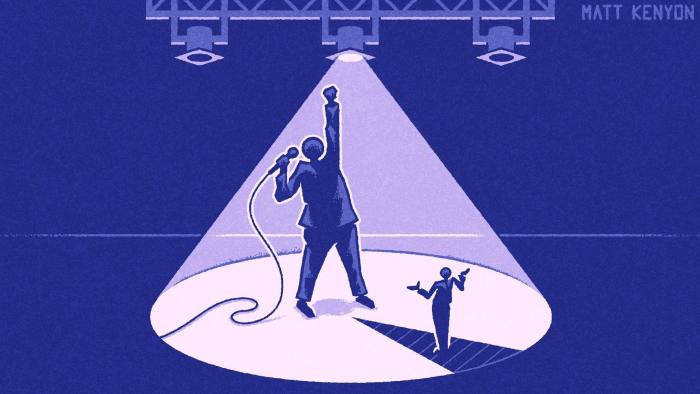It seems inevitable that Oprah Winfrey, America’s empathiser-in-chief, would emerge as the Democratic dream of a candidate to beat Donald Trump in 2020. As an African-American woman, she speaks to any number of interest groups and political issues around identity, from #MeToo to Black Lives Matter.
美国最擅长煽情的奥普拉?温弗瑞(Oprah Winfrey)看起来必将成为2020年民主党打败唐纳德?特朗普(Donald Trump)的梦想候选人。作为一名非洲裔美国人,她与所有利益集团对话,直言围绕身份认同的各种政治问题,从“Me too”(我也是)到“黑人的命也是命”(Black Lives Matter)。
But as the most popular all-round female media star in the US over the past several decades, with a television, movie and magazine empire, she also talks to the middle. Oprah is, like our current president, a global brand, which is telling. We are living in a superstar economy in which the top individuals, companies and even geographic regions command hugely disproportionate power, wealth and attention.
奥普拉拥有一个电视、电影和杂志帝国,但作为几十年来美国最受欢迎的全能型女性媒体明星,她也与中产阶级对话。奥普拉就和我们的现任总统一样,是一个全球品牌,这就是问题所在。我们生活在一个超级明星经济中,在这样一种经济中,顶尖人物、企业甚至是地理区域掌控着极其不成比例的巨大权力、财富与关注度。
Since the late 1990s, we’ve seen the rise of the superstar company. According to the McKinsey Global Institute, three industries — tech, finance and healthcare and pharma — have seen their share of profits nearly triple since then, to about 45 per cent of all corporate profits in the US (the concentration in these industries is also increasing, albeit to a lesser extent in other rich countries).
自上世纪90年代末以来,我们见证了超级明星公司的崛起。据麦肯锡全球研究院(McKinsey Global Institute)称,自那时起,科技、金融、医疗及医药这三大行业的利润份额几乎增长两倍,占据了美国企业总利润的约45%(这些行业的集中度也在提高,尽管其他富裕国家这些行业的集中度相对较低)。
Yet increasingly in the US, this isn’t reflected just in the intellectual property-rich sectors, but throughout the entire economy. As a recent Brookings Institution paper explained, over the past two decades, more than 75 per cent of US industries have seen an increase in concentration of both wealth and influence. If you compare the numbers with the post-second world war period, when US growth was strongest, the contrast is striking. In 1954, the top 60 companies accounted for less than 20 per cent of US GDP. Today, the top 20 companies make up more than 20 per cent.
然而在美国,这种情况越来越不局限于知识产权密集行业,而是遍及整个经济领域。布鲁金斯学会(Brookings Institution)最近一篇文章解释道,过去20年,美国超过75%的行业的财富和影响力的集中程度都在提高。如果将这些数字与美国经济增长最为强劲的二战后作比较,则会发现惊人反差。1954年,美国最大的60家企业占美国国内生产总值(GDP)的不到20%。而如今,美国排名前20的公司就占美国GDP的逾20%。

Why is this happening? One reason, of course, is global competition, which has put more pressure on US businesses and pushed companies away from the more equitable postwar pie sharing between workers, corporations and local communities. Another is the shift in antitrust law. It’s no accident that the changes to monopoly regulation advocated by federal judge Robert Bork spread in the 1980s when foreign competition was rising. The Bork ethos, which held that as long as consumer prices were declining, there was no competition problem, has prevented authorities from checking corporate concentration as much as they did both during the Gilded Era of the late 19th century and just after the second world war.
为什么会这样?原因之一当然是全球竞争,全球竞争给美国企业带来了更大的压力,迫使企业打破了战后员工、企业与当地社区间较为平衡的资源分配格局。另一个原因是反垄断法的转变。联邦法官罗伯特?伯克(Robert Bork)倡导的垄断监管改革在上世纪80年代国外竞争加剧之际蔓延绝非偶然。伯克坚信只要消费品价格下降,就不存在竞争问题,这种思想令美国当局不再像19世纪末“镀金时代”期间与二战后那样控制企业集中度。












